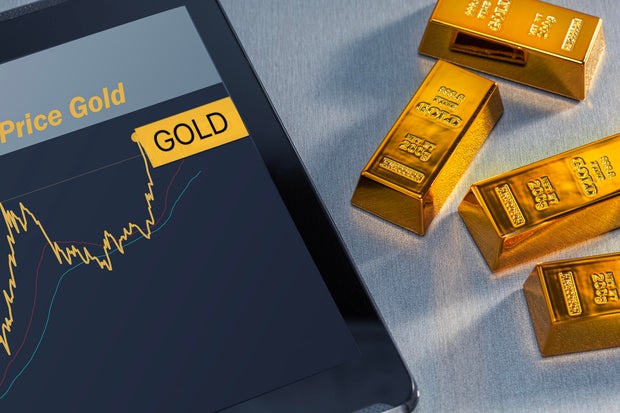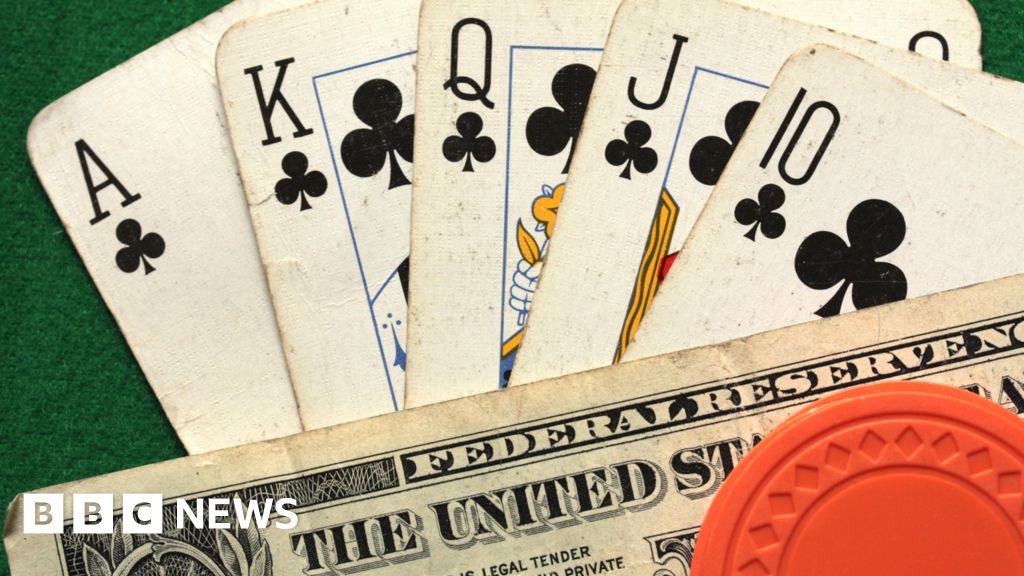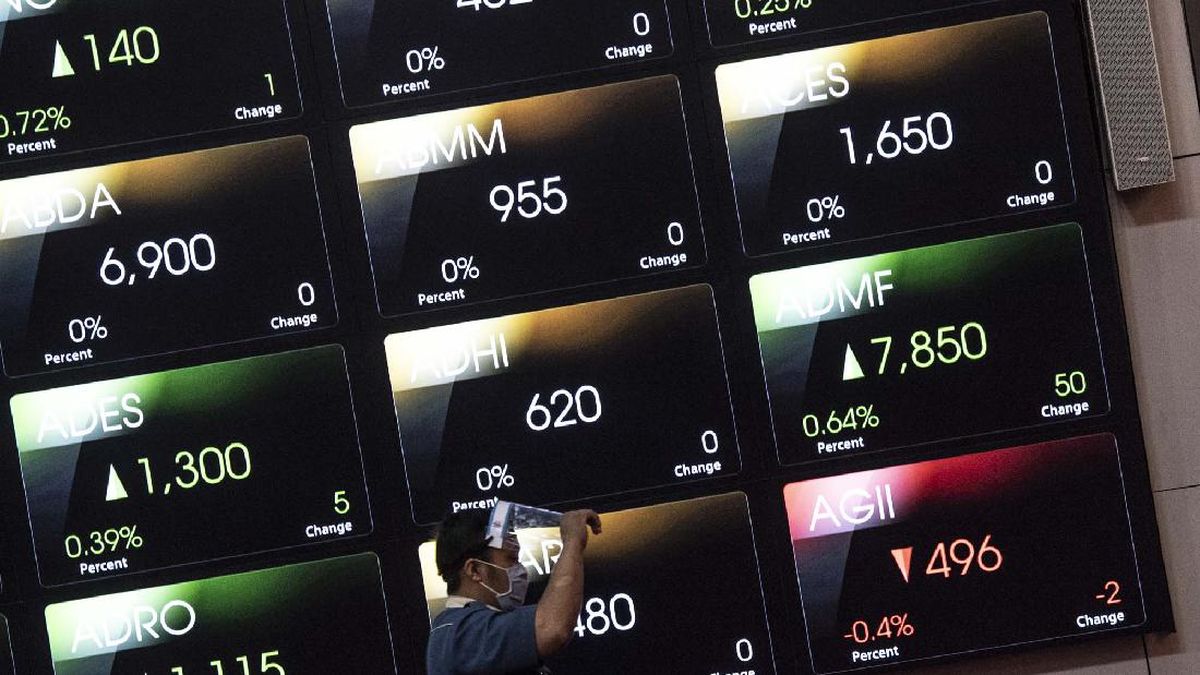 Investors who are willing to act quickly on gold's price swings could reap some big returns in today's market.
Chuyko Sergey/Sergei Chuyko/Getty Images
Investors who are willing to act quickly on gold's price swings could reap some big returns in today's market.
Chuyko Sergey/Sergei Chuyko/Getty Images
After tumbling earlier this week, gold prices are swinging sharply again, underscoring just how volatile the precious metal has become in today's uncertain market. Just a few days ago, the price of gold quickly plunged from over $4,300 per ounce to about $4,000 per ounce, catching many investors off guard after months of steady gains. But by Thursday morning, the price of gold was once again rising, pushing gold up to about $4,136.04 per ounce while illustrating just how quickly momentum can shift in the gold market.
The recent price swings are being driven by a swirl of competing forces. On one hand, the Federal Reserve's recent rate cut, coupled with the expectations of more cuts before the year ends, has weakened the dollar and boosted appetite for gold, which tends to shine when interest rates fall. On the other hand, a stronger stock market has pulled some investors back into riskier assets, creating the whiplash effect we're seeing now.
This kind of back-and-forth can be nerve-racking for long-term investors, but for those who know how to play it, it can also open up opportunities. Whether you're looking to hedge against economic uncertainty or to profit from short-term price changes, there are a few smart, quick moves you can make to capitalize on the current price volatility in gold. Below, we'll examine three to know.
Find out how you can add gold to your investment portfolio today.
3 quick ways to capitalize on gold's price fluctuations now
When gold prices move this fast, flexibility is key. The most successful investors don't just hold gold and hope. They position themselves to benefit from both the ups and downs. Here are a few ways to do just that:
Trade gold mining stocks
Instead of buying physical gold, it could make sense to consider investing in gold mining companies right now or the exchange-traded funds (ETFs) that track them. The main benefit of gold stocks in today's volatile gold market is that they often move in tandem with the price of gold, but with greater leverage. When gold prices rise, mining stocks tend to rise faster.
They also offer an easier way to act quickly when prices swing. Buying or selling shares takes just a few clicks, unlike physical gold, which requires secure storage and insurance, and can sometimes take weeks to sell. Plus, gold miners may continue earning profits even when gold dips slightly, thanks to their operational margins and dividends.
For investors seeking diversified exposure, gold ETFs are also a smart choice to consider. With a gold ETF, you're investing in a fund that can provide a broad play on the entire sector, so there's no need to pick individual winners. That can make it easier to navigate and capitalize on rapid price changes.
Explore your gold investing options and get started now.
Use gold ETFs or gold futures for short-term plays
If you're looking to trade gold's price movements directly, gold-backed ETFs or futures contracts can offer that precision. These types of funds let you buy or sell positions that mirror gold's spot price, and they're far more liquid than physical gold. Active traders can also use these funds to take advantage of short-term gold price dips. For example, if gold plunges on a strong jobs report but then rebounds when investors refocus on rate cuts, a nimble gold ETF investor can capture that swing for profit.
For more advanced investors, gold futures, which are traded on exchanges like the COMEX, allow for leveraged exposure to price changes. With that leverage, though, comes higher risk: A small move in the wrong direction can lead to outsized losses. As a result, gold futures are typically best suited for experienced traders or those working with a financial advisor who understands the complexities of futures markets.
Buy physical gold on dips and hold strategically
For long-term investors who prefer tangible assets, buying physical gold during sharp price drops can still be a smart play, even in a rapidly shifting gold market. Gold's role as a hedge against inflation, currency weakness and geopolitical instability hasn't gone away, and owning gold coins or bars gives you direct control over your asset.
The key to success with this strategy, though, is to think strategically. Rather than trying to time the market perfectly, consider using a dollar-cost averaging approach, which means buying small amounts over time, especially during price dips. That helps smooth out volatility and ensures you don't miss future gold price rallies.
Just remember that physical gold comes with costs. You'll need to account for premiums, storage and security. But for many investors, the peace of mind that comes with having a tangible, universally recognized store of value makes those costs worth it, especially during turbulent economic periods.
The bottom line
Gold's wild swings this week, which pushed the price of gold to about $4,000 per ounce and then drove it up to more than $4,136 per ounce in just a few days, show how quickly sentiment can shift in today's market. And, the reality is that rate cuts, geopolitical tensions and fluctuating economic expectations are likely to keep driving volatility for months to come.
For investors, though, that volatility can also be opportunity if capitalized on correctly. Whether you trade gold ETFs for quick gains, invest in gold mining stocks for leveraged exposure or add to your physical holdings during dips, it's possible to find big wins in this market if you stay flexible and strategic. After all, gold remains one of the world's most enduring assets, but in times like these, it's not just about owning it. It's about knowing how to move with it.
Edited by Matt Richardson


















































